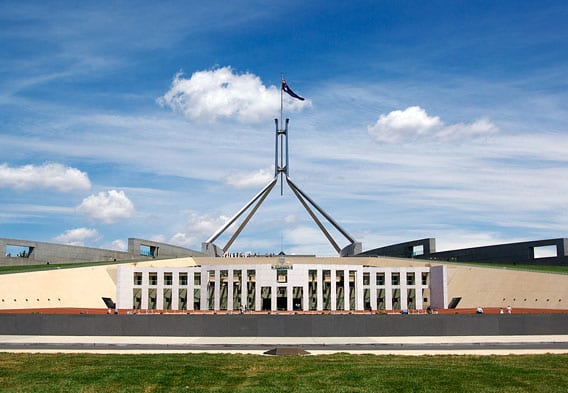Legislation to cut Australia’s renewable energy target from 41,000GWh by 2020 to 33,000GWh was tabled in federal parliament on Wednesday morning, after bipartisan support for the deal was finally secured between the Abbott government and the Labor Opposition.

The Clean Energy Council, which has given the 33,000GWh figure its stamp of approval, said quick passage of the Bill through parliament was essential to unlock more than $10 billion in investment, with around 6GW of new capacity needing to be built.
The cut has been controversial, and justified only by the Coalition’s hotly disputed claims that a 41,000GWh target could not be met. That was only true if the policy uncertainty they created continued.
The reduced target has also sparked claims it will favour wind energy over solar energy, because of the latter’s higher costs at the moment. However, a decision by the government to retain the current interim targets until 2017, and then allow a gradual phase-in to 33,000GWh by 2030 may favour the solar sector.
CEC CEO Kane Thornton said in a statement that the “signs are good that the renewable energy industry, which has languished in an environment of policy uncertainty and lost opportunity for more than a year, is ready and waiting to grab hold of the many opportunities in the wind – and the sun, the waves and much more.
He said about 6,500 jobs and $10 billion worth of investment are set to be created by the large-scale renewable energy sector alone. “With household renewables included, this takes the total up to 15,200 jobs and $40.4 billion worth of investment over the life of the scheme,” he said.
However, Thornton also advised parliamentarians to avoid any “perverse political outcomes …caused by a messy negotiation with cross-bench senators in search of an agreement on native wood waste” – a somewhat contentious part of the RET deal, added at the last minute by the Coalition, that is strongly opposed by the Greens and environmental groups.
Thornton said between 30-50 major projects would be built to meet the 33,000 gigawatt-hour target, along with hundreds of medium-scale solar projects from commercial and industrial businesses looking to manage their own electricity production and consumption.
“Medium-scale solar projects also tend to have much shorter lead times than large-scale power plants, and we can expect that the bipartisan deal on the RET will deliver many more of these projects into the future,” he said.
Thornton said there were already more than 40 projects – adding up to 6600MW – of approved projects in the pipeline, including:
– Stage one of Solar Choice’s $1 billion solar farm on Queensland’s Darling Downs;
– Westgen’s solar farm on the outskirts of Perth and a bioenergy plant in the works.
– FRV’s 150MW solar plant at Clare in Far North Queensland.
– Senvion’s CERES wind farm on South Australia’s Yorke Peninsula
– Conergy’s 35MW of large-scale solar
– CWP Renewables’ Sapphire Wind Farm in the New South Wales Northern Tablelands region.
“It’s a bad bill, Bill”: Greens, solar industry call on Shorten to reject RET deal
Of course, we’re not quite there yet. Not everyone is happy about today’s tabling of the new RET legislation.
Greens leader Richard di Natale has called on Opposition leader Bill Shorten to abandon the deal which he says allows for the burning of native forests, via the inclusion of wood waste in the 33,000GWh scheme.
“This is Bill Shorten’s first big test on the environment, and it’s time to walk away from this deal. Burning native trees is not renewable energy,” said Di Natale. “This deal is bad for the climate, bad for jobs, and a disaster for the environment,” he said.
Australia’s solar industry is also not happy with the watered down RET, arguing that it is a bad outcome for the large-scale solar sector, which stands to be crowded out of the scheme by wind farm projects.
“The Renewable Energy Target Bill tabled in Parliament today is a bad Bill, echoing a bad deal on the Renewable Energy Target,” said Australian Solar Council CEO John Grimes on Wednesday.
“Australians love solar, but the Abbott Government is the most anti-solar Government in Australia’s history. They stand with the big power companies against the interests of Australian families and small businesses,” he said.










